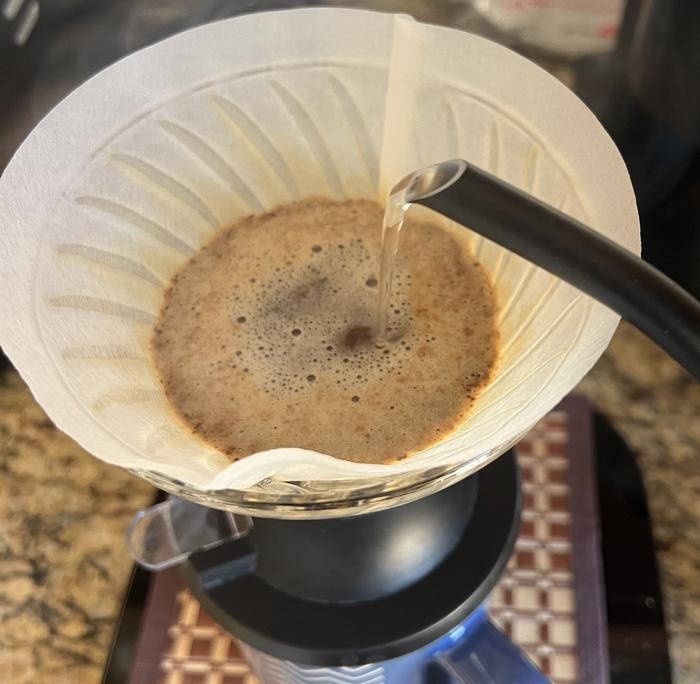In recent times, coffee has become an essential beverage for countless people, serving not only as a morning ritual but also as a core cultural element in many societies. With demanding consumption rates soaring into the tens of billions of kilograms annually, the cultivation of coffee faces substantial challenges. Coffee plants thrive under distinct environmental conditions, and the effects of climate change threaten not just the availability of coffee beans but also the delicate balance of ecosystems in coffee-growing regions. In response to these challenges, researchers at the University of Pennsylvania sought innovative ways to improve the efficiency of coffee preparation methods, specifically focusing on the pour-over technique. Their findings, published in the esteemed journal Physics of Fluids by AIP Publishing, provide valuable insights into optimizing the brewing process while minimizing the amount of coffee used.
Central to this research is the principle of fluid dynamics, which governs how liquids interact when flowing through various mediums. The pour-over coffee method, characterized by its manual brewing process, requires a high level of precision to achieve an optimal infusion of flavors. Researchers discovered that maintaining a high pour distance is crucial for creating a laminar flow—a smooth fluid motion where the liquid applies pressure uniformly onto the coffee bed. According to Ernest Park, one of the study’s authors, achieving an ideal pour height enhances the dynamics of mixing, optimizing the extraction of flavors and essential oils from the coffee grounds.
In their investigation, the team identified specific characteristics of water jets generated by gooseneck kettles that contribute to effective brewing. These kettles are designed to deliver a concentrated and controlled flow of water, allowing the liquid to impact the coffee grounds without breaking into droplets. The principle of laminar versus turbulent flow plays a pivotal role in this context. While a thin jet of water tends to break up and forms droplets, a thicker jet maintains its structure, engaging the coffee grounds in a way that facilitates efficient mixing.
The authors articulated that the dynamics of an avalanche form within the coffee bed when a strong and focused water jet is employed. As water cascades down, it displaces the coffee grounds and creates a swirling motion, enhancing overall extraction efficiency. This process not only leads to stronger brews but also conserves coffee beans, thereby addressing concerns regarding materials used in over-brewing. This kind of innovative thinking assists with sustainability in coffee preparation, emphasizing a need to limit waste amidst rising global demands.
Additionally, in support of their findings, the researchers utilized laser-illuminated transparent particles suspended in a glass funnel to visualize how fluid interacts with granular materials. This technique allowed for a clearer understanding of the physics behind the brewing process, whereby the behaviors of the pouring water and the coffee grounds could be closely examined. Visualizing these interactions is essential, as the dark coloration of coffee makes it nearly impossible to observe these dynamics in a traditional coffee-making scenario.
The findings of this practical study have broader implications beyond just coffee. By examining the intricate relationship between fluid dynamics and granular matter, further research might explore how these principles can apply to other types of brewing and extraction processes. For instance, understanding the effects of different ground sizes on the extraction dynamics could lead to new techniques that enhance flavor and aroma in various beverages.
Moreover, the research team is keenly aware that there are still many unexplored parameters in this domain that merit further investigation. While they do not plan to conduct additional studies solely focused on coffee, they encourage curiosity around kitchen science and every cook’s kitchen experimentation. The simplicity of basic cooking techniques can yield profound insights into scientific principles, bridging the gap between everyday life and research in seemingly unrelated fields such as fluid dynamics.
For any coffee enthusiast, this collaboration of physics with gastronomy reveals a fascinating intersection of disciplines. As science and culinary arts merge, we discover the potential for increased understanding and innovation in both fields. Researchers like Park, Young, and Mathijssen exemplify this integration, demonstrating how theoretical knowledge can inform practical applications that resonate with the broader public.
Ultimately, the findings and techniques presented by these researchers contribute to a broader discussion about sustainability in agriculture and resource use. By optimizing coffee preparation and exploring the science behind brewing, individuals can enjoy a well-crafted cup of coffee with the knowledge that they are also engaging in responsible consumption habits. The emphasis on minimizing waste corresponds with a growing global consciousness about environmental sustainability, making these research developments particularly timely and relevant.
As we embrace these new insights, there lies an important invite for home brewers: think scientifically about the way you prepare your pour-over coffee. Experimenting with variables such as pour height, jet thickness, and grinds size may not only lead to a more satisfying cup of coffee but can also stimulate curiosity and a deeper appreciation for the art and science of coffee making.
By advocating for further exploration into how fundamental principles of physics and chemistry apply in everyday settings, this research encourages everyone—researchers and home cooks alike—to recognize that there is always more to learn and discover in the pursuit of knowledge, even in the most familiar of activities like enjoying a cup of coffee.
In conclusion, understanding the scientific factors at play in coffee preparation highlights the importance of infusing research with practical culinary applications. The intersections of various disciplines can lead to innovative solutions that enhance everyday life while addressing pressing global challenges.
Subject of Research: Pour-over coffee preparation and fluid dynamics.
Article Title: Pour-over coffee: Mixing by a water jet impinging on a granular bed with avalanche dynamics.
News Publication Date: April 8, 2025.
Web References: https://doi.org/10.1063/5.0257924
References: Physics of Fluids
Image Credits: Ernest Park.
Keywords
Coffee, Fluid dynamics, Pour-over coffee, Brewing techniques, Sustainability.




